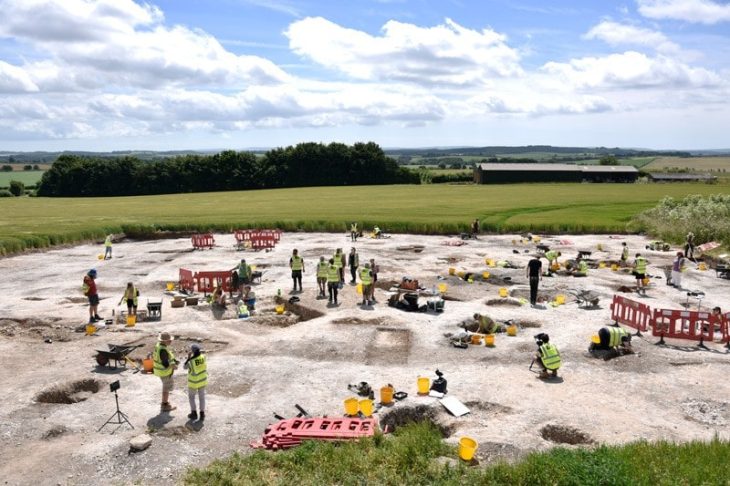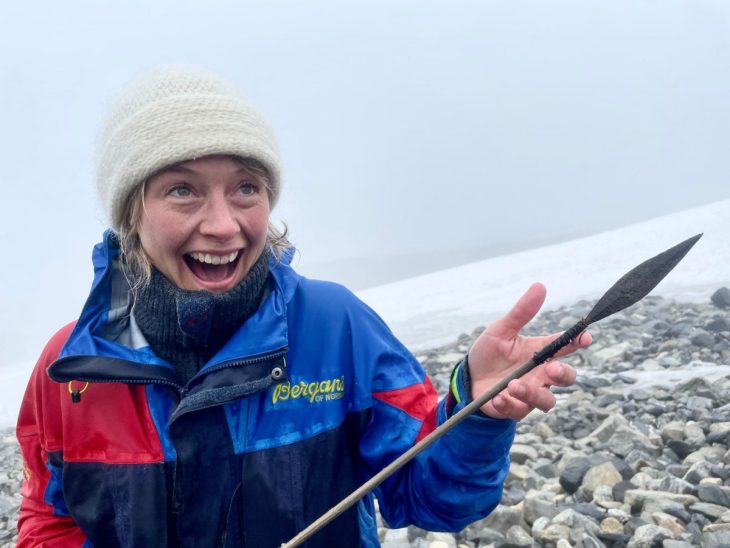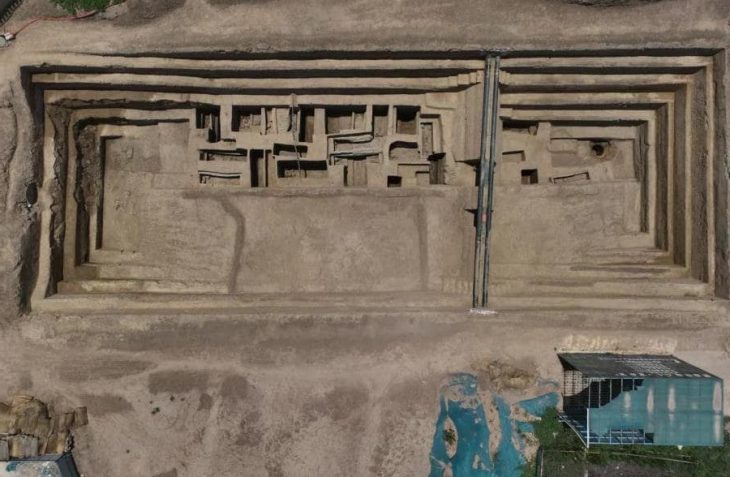Rock paintings are material cultural assets that provide us with unique information about the socio-cultural structure, religious beliefs, and rituals, imagination, and nature of the nomadic communities of the period.
The Eastern Black Sea Region in Anatolia, Erzurum-Kars-Ardahan Plateau, and Hakkari-Van Region in Eastern Anatolia are home to rock drawings created by nomadic people as a form of communication, especially at a time when writing was unavailable.
Artvin Demirkapı/Arılı rock paintings give information about the life of nomadic communities
Demirkapı/Arılı rock paintings are located in a rocky area called Namazgah, at an altitude of 2200 m from the sea, 20 km away from Arhavi district in Artvin province, 6.5 km southwest of Arılı Plateau.

Continuing his studies in this region, Atatürk University Faculty of Letters, History Department Lecturer Assoc. Dr. Oktay Özgül said that during their work within the scope of “Surveys of Artvin Province and its Districts”, they identified 56 paintings on 11 rocks containing various subjects, and they carried out photographing and drawing studies.
Oktay Özgül said that the ones usually depicted in rock paintings include mountain goat motifs, animated deer with exaggerated horns, hunting and trap scenes, sun course, and cavalry; He also pointed out that carefully drawn fish paintings, whose examples have not been seen before in Anatolia, also occupy a special place.
Özgül stated that “the rock paintings also contain themes that reflect a kind of nomadic life, including symbols that show the ritual area and paintings that depict the daily flow of pastoral life,” and stated that the two cultures carry traces of both sea and high plateau cultures.
Özgül gives the following information in the article “Artvin Arılı (Demirkapı) Plateau Rock Paintings” published in December 2021 by Belleten Journal.
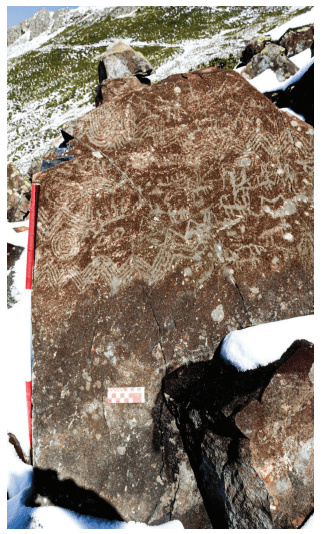
It is surprising that the beliefs of Siberian shamanism are depicted in rock paintings
“The fact that these people, who carry out animal husbandry and fishing together, see rowboats/boats as a part of their rituals, makes the field of rock painting even more mystical. Scenes of boats, fish, and caught fish reflecting the marine culture appear as depictions that have never been seen before in the immediate surroundings and other regions.
In particular, we were surprised by the depiction of beliefs rooted in Siberian Shamanism, such as rowboats/boats transporting souls of people or other living creatures to other worlds. However, the depiction of people/shamans traveling between worlds with open hands on a mountain goat and another unidentified animal is also very interesting. Again, tent painting, drawn in a primitive form in a painting, appears as an element that clearly shows an important part of the oba life. In addition, the hunting scene in rock No. XII reflects an essential feature of hunter-gatherer life. Similar examples of such scenes can be found in the Kars Digor/Indirect rock paintings in the nearby region.”
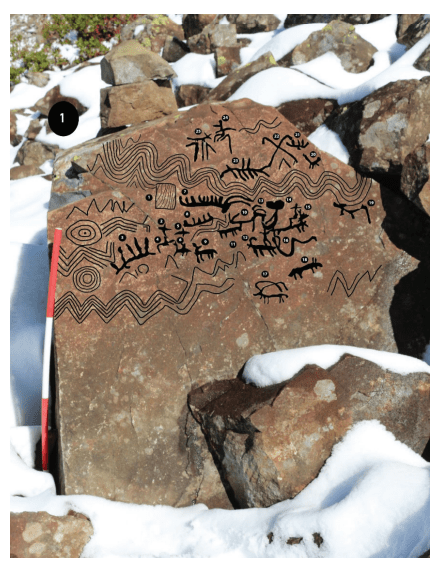
Rock paintings point to Bronze Age culture unity
Özgül, who drew attention to the fact that the pecked method was used in addition to the striking-carving-line technique, which is frequently used in Eastern Anatolian rock paintings, said that another important piece of data is the similar rock painting examples of Erzurum-Hakkari mountainous region; He states that it also contains similar stone statues and that these features indicate the cultural unity of the two regions in the Bronze Age.
Özgül said, “There are difficulties in dating the rock paintings. The absence of any kurgan, necropolis, or settlement remains in the immediate vicinity makes it difficult to date the paintings. However, the formal features of the animal depictions in the rock paintings and the comparison of the construction techniques with the surrounding geographies by analogy gave us some ideas on this subject. Based on this, we can say that the Demirkapı/Arılıkaya paintings were made in the Early Bronze Age and the Middle Bronze Age.”
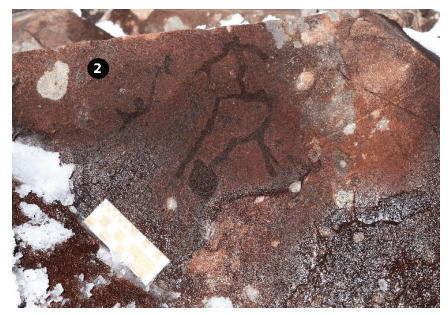
Why might Bronze Age people have chosen the region?
Putting forward two views as to why the region might have been chosen by groups of people, Assoc. Dr. Oktay Özgül said that it is highly probable that the first of these was the ritual area of the region because; He says that there are depictions of shamanism in the paintings and that such ceremonial scenes, which have become widespread among steppe tribes since the Middle Bronze Age and appear as a belief culture, are very clearly seen in open-air temples such as Saymalıtaş-Tamgalısay. He also stated that similar ritual scenes also stand out in Kars/Digor Dolaylı’s rock paintings.
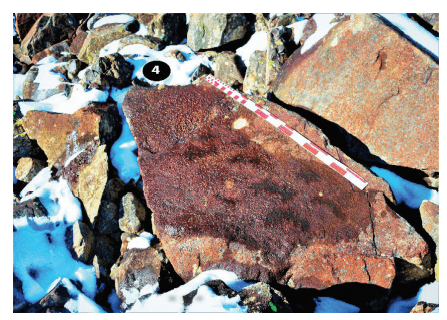
A second opinion is; is that it can be thought of as a highland of communities that lead a nomadic life. In this view, Özgül says; “As it is known, steppe communities migrated to higher places in summer and to lower places in winter throughout history. We can understand the existence of life similar to this one from the independent pictures on the petroglyphs. Hunting scenes in rock paintings, tents, fires, hearth, wild animals, etc. depictions appear as scenes from the life of the highland. We think that when the entire rocky area is scanned, more rock paintings will be found. It may be possible to find new compositions such as entertainment, games, wars, which give more detailed information about the highland life in new rock paintings.”

Artvin Arılı (Demirkapı) Plateau Rock Paintings Pointing out that they also provide information about the animal fauna seen in the region during the Bronze Age and now extinct, Özgül said, “The rock paintings also give us information about the animal fauna in the region. “We can state that a figure in the pictures, which we interpreted as a bison, is probably a Caucasian bison and is extinct.”
You can read the full article from the December 2021 issue of Belleten Journal.










